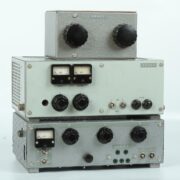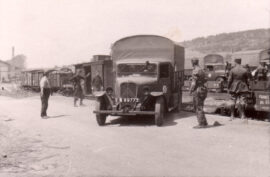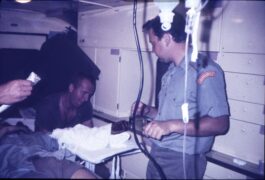
10 Czechoslovak Agency Transmitter 300AB, 1960s
Fotogalerie

Only 20 sets of this modern transmitter were produced in the early 1960s to meet the needs of the First Administration of the Ministry of the Interior (The Main Intelligence Administration), which was the main intelligence unit engaging in activities of offensive intelligence. In the late 1950s and early 1960s, the First Administration, as part of the Soviet intelligence apparatus, focused on penetrating the Third World, i.e. Africa, Latin America and Asia. The transmitter was used for these purposes. For example, between 1965 and 1968, it was used in Kurdistan (northern Iraq). However, it was first deployed in 1961 in one of the most famous operations of the First Administration of the Ministry of the Interior in Congo, Africa. The Congo crisis of 1960-1961 was the first major confrontation between the Western and the Eastern blocs in sub-Saharan Africa. During the chaos that affected the country after its declaration of independence in June 1960, the Czechoslovak embassy became the main link between the Eastern Bloc and the pro-Soviet Prime Minister Patrice Lumumba (several officers of the First Administration were advisors in his security forces). However, all Czechoslovaks were expelled after he was overthrown. In January 1961, Lumumba was assassinated and his policies in the Eastern Congo were continued by Antoine Gizenga. Czechoslovak intelligence managed to make contact with him. Two agents with fake Austrian passports infiltrated the headquarters of Gizenga’s government in June 1961. They also managed to smuggle a 300 AB agency transmitter across the border. It became the only link between Congo and the countries of the socialist bloc.
Aktuálně

Oceňovaní spojenci - Pozemní útvary československé branné moci v bitvě o Francii očima francouzského velení

Vánoce a přelom roku v zahraniční misi na Slovensku v roce 2022

Prosinec 1944 – oficiální vydání prvních poštovních známek osvobozeného Československa









